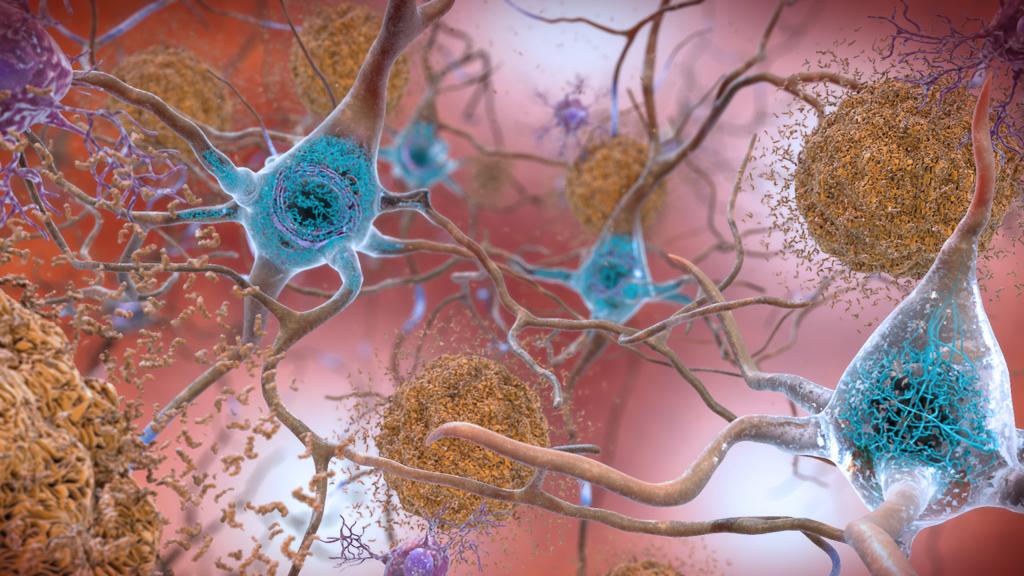What is dementia?
Dementia is not a specific disease but a generic term used to describe a set of symptoms (a syndrome) associated with a gradual loss of cognitive function that begins to impact an individual’s daily life. While dementia is commonly associated with memory loss, it can also affect speech and language, problem-solving and other cognitive abilities.
Further information on dementia symptoms can be found on our ‘Seeking a diagnosis’ page.


A common characteristic of many neurodegenerative conditions is the build up of abnormal, toxic proteins in the brain and nervous system.
What causes dementia?
Dementia can be caused by several different neurodegenerative conditions. Alzheimer’s disease is the most common cause of dementia, making up around 60% to 80% of cases.
Neurodegenerative conditions involve a gradual loss of function and eventual death of brain cells, known as neurons. The body’s nervous system facilitates rapid messages to be sent across the brain, and to and from the rest of the body, allowing us carry out vital functions such as breathing, talking, eating, moving, and thinking. When neurons don’t work as they should, it can cause problems with carrying out the functions that they should help to control.
Dementia can be confused with delirium, as cognition is disrupted in both. Dementia mainly affects memory, has a slower onset than delirium (usually progressing over months and years), and is generally irreversible due to progressive neurodegeneration. Delirium, on the other hand, mainly affects our attention, is typically caused by acute illness or drug toxicity, but is often reversible.
What research is being done into dementia?
The UK Dementia Research Institute carries out research across neurodegenerative conditions, aiming to uncover what causes neurons to break down.
Although neurodegenerative conditions share some features, they also have clear differences. For example, Alzheimer’s mainly leads to memory loss, while Parkinson’s impacts physical movement. By studying all these conditions at the same time, we can look for the similarities and links between them to understand what drives such changes in the brain.
Understanding the similarities and differences is also crucial for developing targeted treatment options. By also investigating the varied causes of neuron damage, which parts of the brain are impacted, and the symptoms of each condition, we aim to build a comprehensive understanding and drive forward new treatments that will benefit individuals living with a range of conditions.

